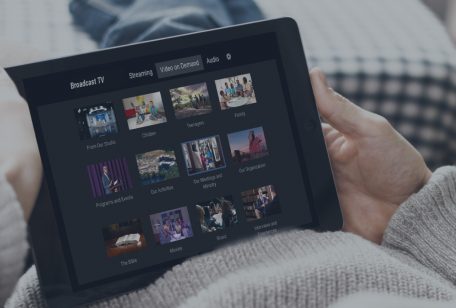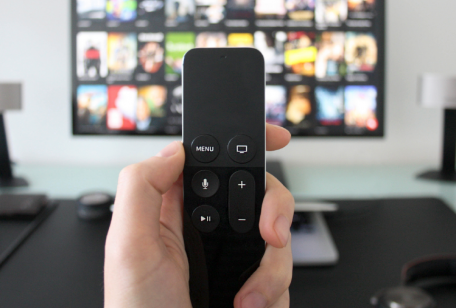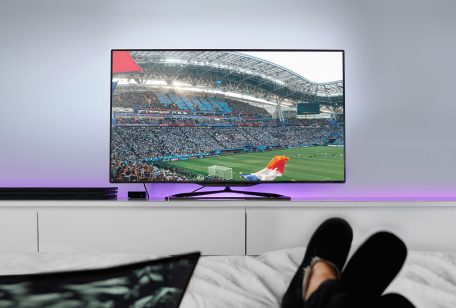
MDC Newsroom
Original Content & Infrastructure
OTTs have ushered a new era for media consumption and in the process created new challenges for more than one industry. In entertainment, for example, there are companies with dozens of subdivisions, lines of business and objectives, but they must pay closer attention to how their content is created in order to maintain high-quality standards and not just repackage the contents they already have and redistribute them through on-demand video platforms.
For the telecom industry, user experience is a top priority. This means creating the infrastructure necessary to deliver fast speeds with low latency to large populations.
Read on: How are networks in Mexico getting ready for the growth of OTT services?
Unified user experience: a lesson that history left us
Just like Santayana once warned us, “those who do not learn history are doomed to repeat it.” Case in point, America Online in the year 2000. During this time AOL announced that it planned to acquire Time Warner Inc. for $165 billion dollars to create the world’s largest media company. The acquisition brought together top brands like HBO, CNN, and Warner Bros. and delivered it to millions of households in the United States through AOL’s internet service.
Nine years later, Time Warner decided to split with AOL, worth only $ 3.4 billion then, to get out of what has often been described as one of the worst mergers in history.
Having a large amount of content was not the answer at that time – and it is entirely possible that it isn’t the answer now. The new wave of content creators has almost universally declared that a “unified user experience” is the best path to success for OTTs. This means well thought-out content under excellent infrastructures and not just a large digital showcase.
Alliances and acquisitions have become a path to survival
A decade later since the AOL merger, Time Warner joins AT&T for $ 85.4 billion, setting the same ambitious goals as it did back in the 2000s.
The merger was largely disputed in the courts, but AT&T successfully won its case. As the merger proceeds, we’re left to wonder how will they make this partnership different from what AOL and Time Warner had ten years ago? AT&T President and CEO, Randall Stephenson, shared the following in a statement about the merger:
“The content and creative talent at Warner Bros., HBO and Turner are first-rate. Combine all that with AT&T’s strengths in direct-to-consumer distribution, and we offer customers a differentiated, high-quality, mobile-first entertainment experience… We’re going to bring a fresh approach to how the media and entertainment industry works for consumers, content creators, distributors and advertisers.”
The cable television division of Comcast, the world’s second-largest media conglomerate behind The Walt Disney Company, plans to push NBCUniversal as a streaming service by 2020.
The Walt Disney Company, owners of Star Wars, Marvel, Pixar, Disney, and National Geographic, has announced that Disney+ is the “highest priority” of the company for 2019 and has confirmed that there is already a roadmap for the first year of the service – which will include 25 original series.
But alliances and acquisitions are not the solutions to everything. Several factors can cause a large telecommunications company with all the proper infrastructure and connectivity to not meet the expectations of its partnership.
AT&T is on a similar path as AOL once was, as it plans to combine its distribution and infrastructure with Time Warner’s content in the hopes of winning the media war for dominance. AT&T’s infrastructure will certainly help expand content distribution, improve broadcast services and deliver targeted ads. “But you have to know when you’re acquiring a creative business, the limits of technology,” said Eric Kessler, former president, chief operating officer of HBO and a survivor of the AOL-Time Warner merger.
In recent years we have witnessed an increase of mergers and acquisitions in the media and telecom market in the United States. According to PwC’s TMT Deals Insights, 194 transactions in these sectors were recorded in the second quarter, worth 44.9 billion dollars, of which three were for more than $5 billion. There’s a growing appetite for investing large amounts of money in acquiring premium content and investments to improve technological capabilities. Meanwhile, users are spending more and more time consuming media through their mobile devices.
The global consumption of data by smartphones will have an annual growth rate of 33.3% between 2017 and 2022. By 2020, the consumption of mobile data will be greater than that of fixed broadband.
Read on: OTT adoption among Pay-TV subscribers in Mexico unveils intriguing facts
Don’t become complacent & redesign services for the users
Almost 20 years ago, Time Warner executives were not so sure of their agreement with AOL because they distrusted the technology that cannibalized existing businesses. Twenty years ago it was not easy to imagine the possibility that a viewer would move away from the television to move to a mobile device. Consider the advertising opportunities that were not taken advantage of in those years by the media industry.
The complacency of the entertainment industry caused them to be taken by surprise when the new players entered the scene. Two decades ago, DVDs were still rented and cable and satellite seemed like a safe bet. But by the mid-2000s, AT&T launched U-verse, a triple play telecommunications service brand while Verizon brought to the American market Verizon FiOS, another integrated communications service that operated in a fiber optic network.
Sources:








